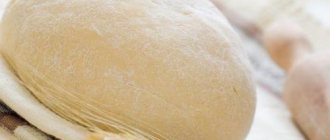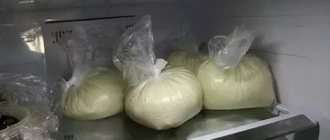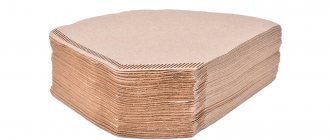Preparing dough is always long and difficult, especially if it is yeast. Sourdough, settling, kneading, kneading, wrapping in heat away from drafts - this process is too long to treat yourself to rich buns or pies every day. And I really want fresh baked goods! This raises the question: is it possible to freeze yeast dough? After all, it has its own specifics. We see frozen puff pastry being sold in stores. Yes, and to prepare it you need the help of a refrigerator. But in puff pastry and shortcrust pastry, the ingredients are milk, butter, eggs, flour, sugar and salt. And in our case, we are dealing with a living culture of yeast bacteria. How will they feel in a state of shock freezing? Will our dough change its properties after being in the refrigerator? Will the baked goods rise? Will it have the same taste as freshly prepared dough? We have to answer these questions in this article.
Something about bacteria
In order to answer the question of whether it is possible to freeze yeast dough, we first need to decide whether this will kill the yeast culture. It turns out that the simpler the organism, the more resilient it is. Bacteria, unlike humans, simply fall asleep in an unfavorable environment. That's why dry yeast exists. Once in a humid environment, these simple bacteria wake up and immediately begin the process of reproduction, causing the dough, and then the dough, to increase significantly. Yeast reacts to cold in the same way. They stop reproducing and go to sleep - until better times. It should also be taken into account that the vital activity of these bacteria depends on air. Therefore, when freezing yeast dough, you should completely cut off oxygen to it. Then, when the package is unwrapped, the bacteria will begin their activity even more actively. The dough will be saturated with air bubbles and increase in size right before your eyes. And the baked goods will become even tastier.
Secrets of storing yeast dough
These subtleties will help to better preserve the yeast dough:
- Using zip bags: you can create the most airtight environment in them; to do this, insert a cocktail tube into the small hole left, suck out the remaining air through it and quickly zip the bag all the way;
- Repeated kneading, if we are talking about freezing the risen dough, this will remove excess carbon dioxide from it;
- Flattened shape: this way it will freeze faster than if it were formed into a ball or a similar tall version, which means it will have time to undergo less fermentation and will be preserved better;
- Small portions: this again facilitates quick freezing; it is better to then defrost several pieces for a large pie and combine them.
To understand the period during which the dough is suitable for use, for each packaged piece, mark the date of freezing and the approximate expiration date with a marker. An adhesive label will work instead of a marker.
How to freeze dough for up to 6 months: developed by Kuban bakers [video]
How to freeze yeast dough
There are several ways to prepare the base for buns for future use. It happens that we were about to bake something, but we didn’t get the ratio of dough and filling right. What to do in this case? Where to put the remaining yeast dough? There are other situations. For example, we formed the products, but decided not to bake them yet (or not to cook the whole batch). And finally, the third situation. We, as experienced cooks, are going to bake pies today, buns tomorrow, and pizza the day after tomorrow. And we want things to go smoothly, not to bother with the batch every time. And here the question arises: is it possible to freeze yeast dough in one way, or does each individual case have its own nuances? We answer: there is a difference in cooling conditions, although not very significant. In any case, the dough should not remain in the freezer for more than three months. And it can only last two days in the refrigerator. The formed pies can also be stored. But do not forget that it is difficult to protect them from weathering.
Option: we initially prepare the dough for future use
Some housewives do not wonder whether it is possible to freeze yeast dough - they do this on purpose to make the baked goods more airy. What do we need to know when we prepare the base for baked goods for future use? The fact that some bacteria in culture may not “survive the winter.” Therefore we will need more yeast. If you are cooking according to a recipe, you should do a simple arithmetic calculation. From the amount of yeast specified in the prescription, we calculate five to seven percent and sum the resulting number to the total mass. Preparing dough for future use also has its own specifics. If it is a pastry, prepare the dough. Then add the rest of the ingredients. In this case, it is better to use flour with a high gluten content. Let the dough rise a little. We don't need to knead it and knead it. As soon as the dough becomes homogeneous, prepare it for long-term storage.
Rules for freezing dough and storage temperature
Maintaining the correct temperature (from -15 to -18 °C) is the first condition. There are modern freezers that have different temperatures on each shelf.
Do not store the dough near frozen meat and fish
If the temperature is very low, this will lead to spoilage of the dough. Initially, the workpiece can be placed on the emergency freezing shelf, and after a day it can be stored in a compartment with a more gentle regime.
Do not store the dough near frozen meat and fish.
In order for the dough to withstand low temperatures well and retain its fluffiness, two factors must be taken into account - the amount of flour and yeast.
Freezing rules:
- It is better to use flour for kneading with a high protein content. Wheat gluten will help maintain the necessary consistency. If there is a deficiency of this substance, the product after defrosting will be shapeless and will practically lose its plasticity.
- Flour oversaturated with gluten will result in a dense crumb.
- If you plan to freeze the dough, then during its preparation the amount of yeast must be increased. The average norm is 7 grams, you need to add 4-5 grams more.
- Yeast must be selected with a slow action, since low temperature negatively affects the properties of the yeast.
- The time for raising the dough is one hour.
Freezing process
Preparing dough is a labor-intensive process that takes time.
You need to take a day and prepare a large amount of dough and freeze it in briquettes. If you compare the taste of baked goods made from fresh and frozen dough, it is absolutely no different.
List of products that are necessary for preparing the preparation:
- wheat flour - 1.5 kg;
- milk - 1 l;
- sugar - 4 tbsp. l;
- butter or margarine - 1 pack;
- eggs - 4 pcs.;
- dry yeast powder - 2 bags of 7 g each;
- a pinch of salt.
Recipe for making yeast dough:
- Melt the butter in a water bath and let cool slightly.
- Pour milk into a bowl and heat it, it should be warm.
- Remove the milk from the heat, add the yeast and stir well.
- Add the required amount of sugar.
- Add a small amount of flour and mix well. Place the dough in a warm place and let it rise. On average it takes 40 minutes.
- Next, pour in the beaten eggs, salt, oil and mix.
- Add flour in portions, stirring the mixture each time.
- When the dough becomes difficult to stir with a spoon, place it on a table sprinkled with flour and knead until smooth. The workpiece should be plastic and elastic.
The quality of the product depends on the correct freezing. For convenience, the dough should be divided into portions, one portion for one use. The workpiece must not be re-frozen.
The product should be kneaded thoroughly until a smooth ball is obtained. Place in one plastic bag, remove air, tie and place in a second bag. You can use food grade film or foil.
The quality of the product depends on the correct freezing
To prevent the dough from sticking to the bag, treat its inner surface with sunflower oil or generously sprinkle with flour.
Be sure to indicate the freezing date on the package. Place on a shelf with a minimum temperature and wait until the dough is completely frozen. Then transfer to another compartment for further storage.
How long does yeast dough last in the refrigerator?
The finished semi-finished product can be kept in the freezer for no more than four months.
Can be stored in the refrigerator for 24 hours at a temperature of +5...+8 °C. If the temperature drops to +2...+3 °C, the product can remain for 48 hours.
Storage longer than the specified period will lead to damage to the product, it will ferment and sour. The baked goods will acquire a sour smell and unpleasant taste.
Step-by-step instruction
You should know that defrosted dough cannot be put back into the refrigerator. It needs to either be baked or thrown away. Therefore, we immediately divide the dough prepared for future use into portions - so that each piece can be used at a time. Place them on napkins and stick them in the freezer. Let's wait until the dough becomes hard as a rock. Now let’s put the kneading dates on the napkins and put these portions in strong plastic bags. To secure the edges, we will tie them with an elastic band to prevent air from entering. Put the bags back in the freezer. The dates will help us determine when the product should be disposed of.
How long does frozen dough last?
Properly frozen dough can be stored for up to three, maximum four months. The sooner it is used, the better the baked goods will turn out. If the refrigerator model has one common door for both chambers and, accordingly, the temperature in the freezer is not constant, then the dough should be put to work early, without waiting for the expiration date.
See also: How to put yeast dough on pies
The shelf life is also shortened by a long absence of electricity, leading to temperature fluctuations.
If for some reason the dough is defrosted, it can no longer be re-frozen; it will have to be used.
Option: we want to save already formed products
In this case, prepare the dough in the usual way. The only thing we need to change in the recipe is to use slow-acting yeast. A colony of bacteria that is rapidly developing will go through its life cycle and die out. And slow-acting yeast will continue to work after repeated kneading and settling. The cake pan should be greased with oil. Place the dough and filling there and wrap tightly in several layers of foil. Cover frozen yeast dough pies lying on a board with cling film. It wouldn’t hurt to sign when this homework was done. Let's put our products in the freezer. We have been using them for three months.
Option: we accidentally had leftover yeast dough
This case is the most difficult. After all, we could use both instant yeast and flour with low protein and gluten content. In addition, we went through all stages of working with the test. We let him rise, kneaded him, kneaded him, defended him. And then it turned out that a certain part of the test remained unused. How to save the product? Nothing could be simpler. Take plastic bags and lightly sprinkle the inside of them with flour. Divide the dough into portions and form into balls. We also roll them in flour and put each in its own bag. What is important: do not stuff the bags tightly. After all, the bacteria will not immediately realize that they are being frozen, and will continue to develop for some time. The risen dough may tear the bag. In this option we need a special temperature regime. Let's shock freeze the dough. Let's first set the camera to minimum. And then, when the dough in the bag turns into stone, you can increase the temperature to -15 degrees.
Proper defrosting
It is necessary to spare bacteria and call them out of sleep gradually. If we simply take a piece of dough out of the freezer and defrost it at room temperature (or using hot water or heating in the microwave), then the baked goods will not please us with their taste. Let's do it differently. The day before you are going to bake the product, transfer the piece in the bag from the freezer to the refrigerator without unwrapping it. Then you can take it out of the bag and open it at room temperature. The dough should rise and increase in volume even more. Then we crush it and form the products. Baking from frozen dough turns out very tasty and is in no way inferior in quality to the one for which the base was just made.
Slow defrosting
When there is enough time, it is better to use gentle methods for defrosting.
1. Release the dough from its packaging - it can be film, foil or a bag. Place it on a board or prepared rolling mat and leave it to rest. You should not unfold or separate the layers from each other until they are completely defrosted - they can crumble, break, and rolling out the dough later will not be very convenient. At room temperature, five hours will be enough. Only after complete thawing can the dough be safely unrolled.
2. Leave the dough on the bottom shelf of the refrigerator overnight; there is no need to unpack it. It will thaw in about 10 hours. Even if the housewife’s plans change and she doesn’t bake, the dough can easily sit in the refrigerator for a little longer - the layers won’t stick together.











